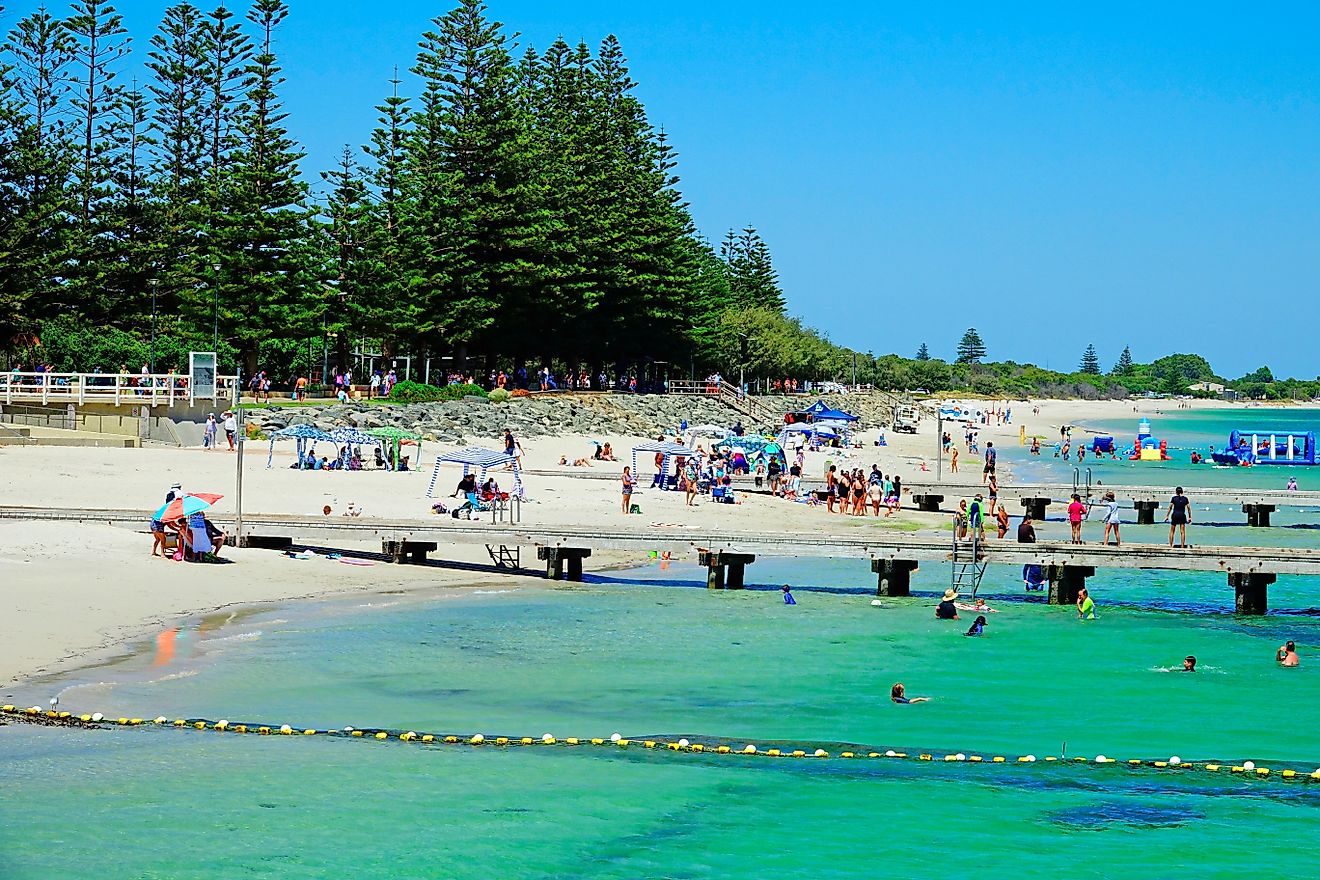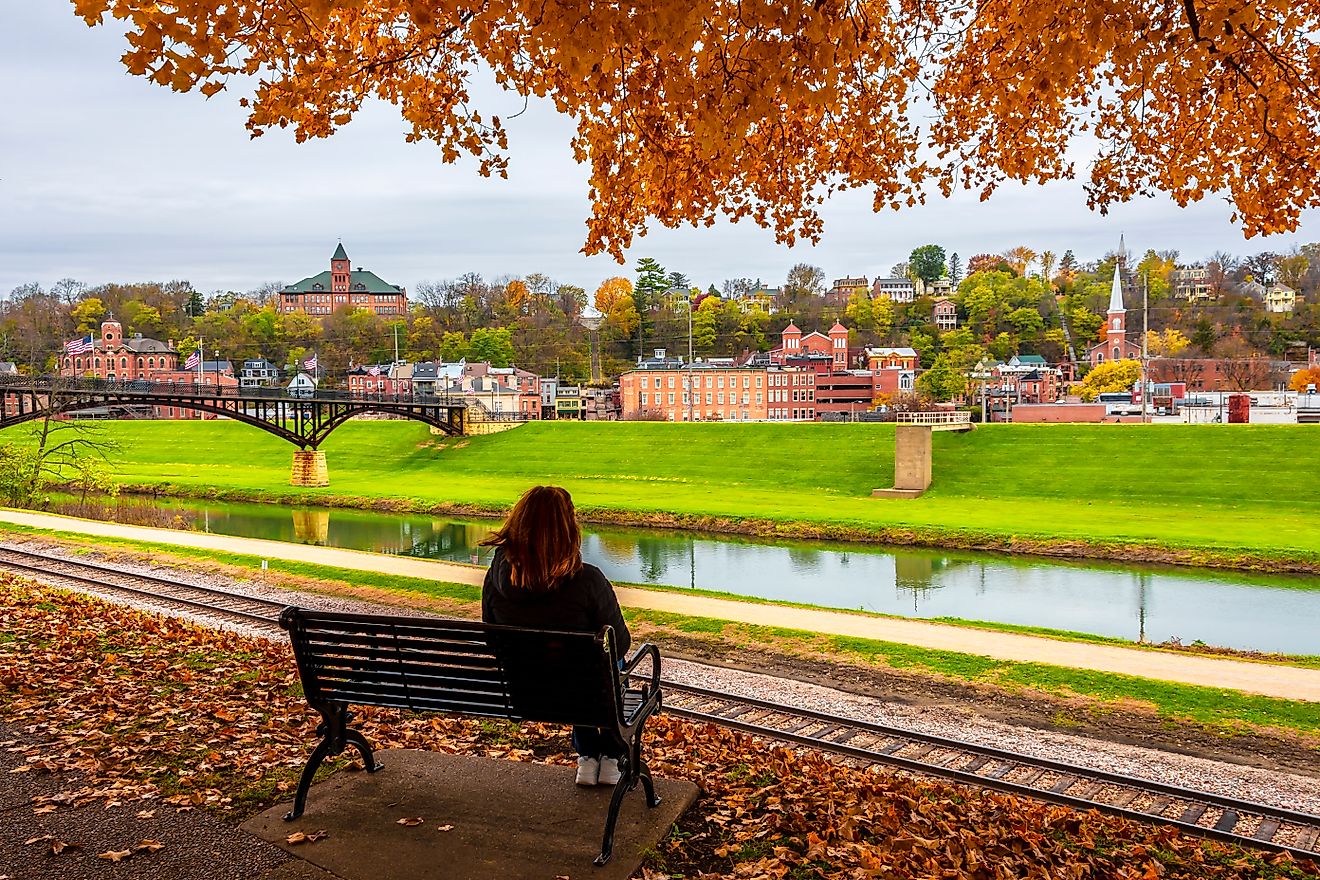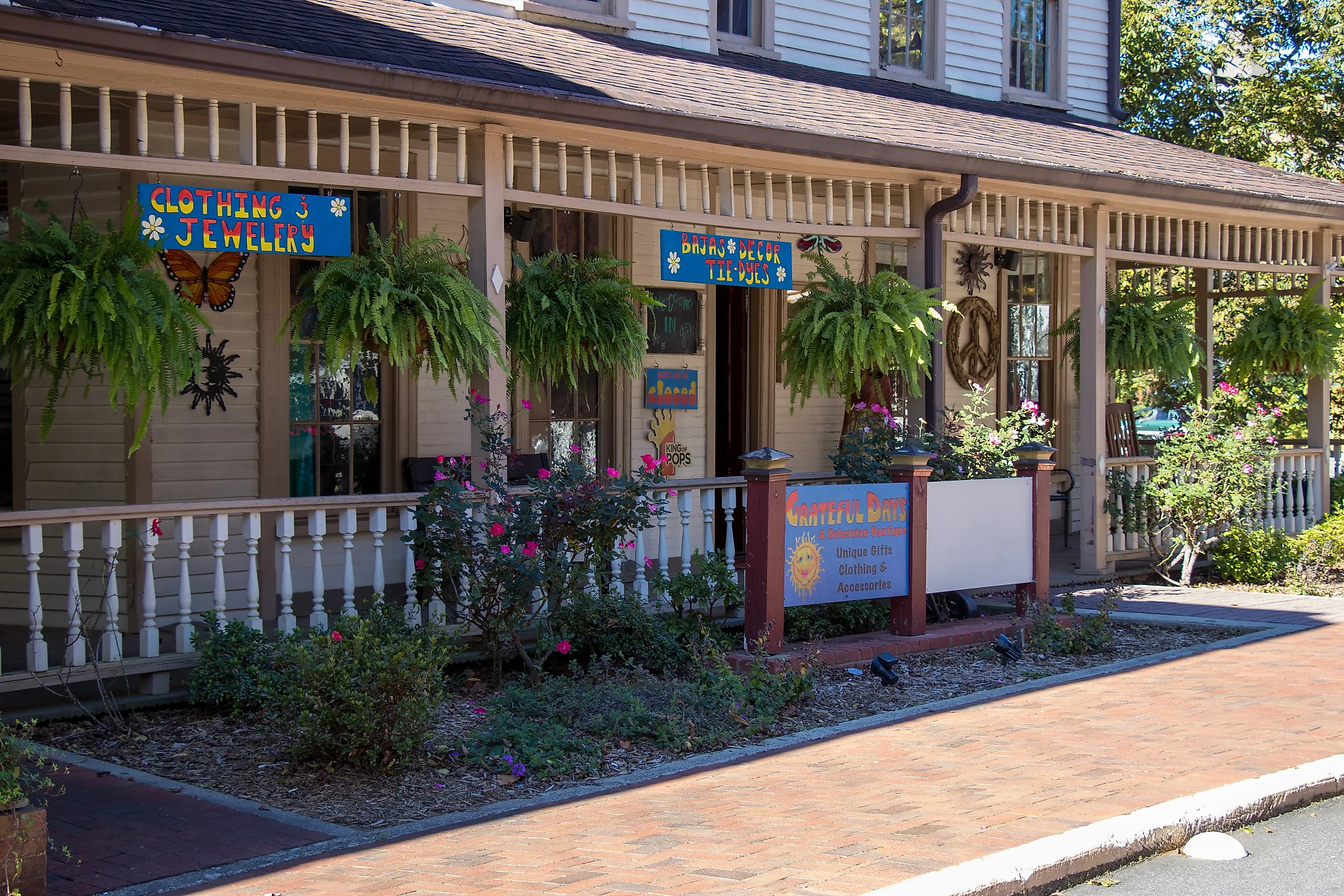
9 Safest Small Communities To Settle In Georgia
In Georgia, safety isn’t just a statistic; it’s a design choice. Some towns make the news for crime. Others make it quietly irrelevant. These are the places where zoning codes matter, patrol cars aren’t just reactive, and infrastructure does more than move traffic; it manages risk. You won’t find surveillance towers or emergency alerts in the air. What you will find in the Georgia towns below is consistency: calm data, engaged residents, and public spaces built for eyes-on-the-street. It’s not always obvious. But it works.
Milton
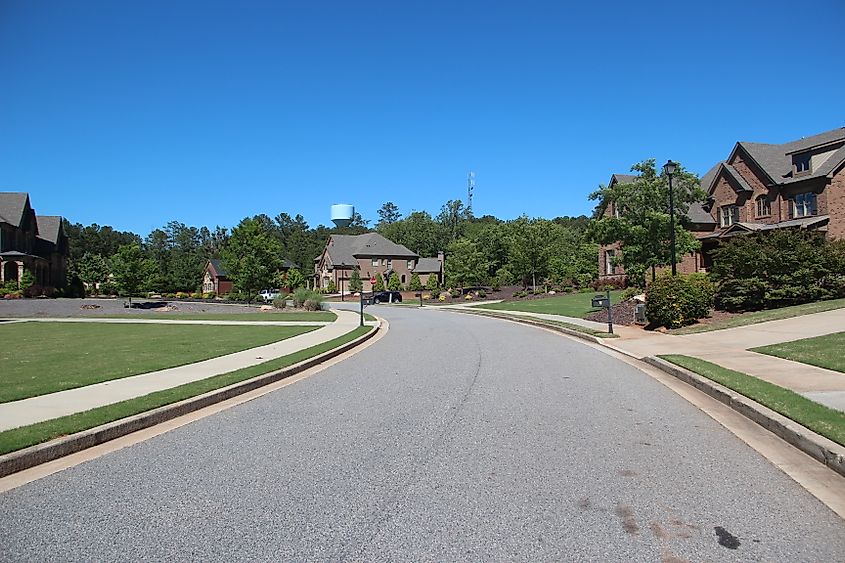
Milton was incorporated in 2006, making it one of the youngest cities in the state, but its character is rooted in an older rhythm, one shaped by horse farms, rural roads, and open acreage that still dominates the landscape. The city restricts high-density development to preserve this low-impact atmosphere. Zoning favors agricultural and equestrian use, and several active stables operate within city limits. It's a rare place where residents may pass hayfields on the way to school drop-off. Over the last five years, Milton's violent crime rates, particularly aggravated assault and homicide, have stayed consistently below both state and national averages, without exception. The city maintains a strong police presence without a heavy footprint, aided by low population density and high civic engagement.

Birmingham Park covers over 200 acres and offers hiking and unpaved trails used by local riders. At the core of the city is Crabapple Market, a tightly clustered retail area where Six Bridges Brewing serves locals in a minimalist taproom. Milton's best-known coffee spot, Bloom Road Coffee Co., operates out of a converted house and functions as both café and informal meeting hub. Bell Memorial Park draws families from all over Fulton County, offering ballfields, walking paths, and shaded spaces with steady patrol visibility.
Suwanee
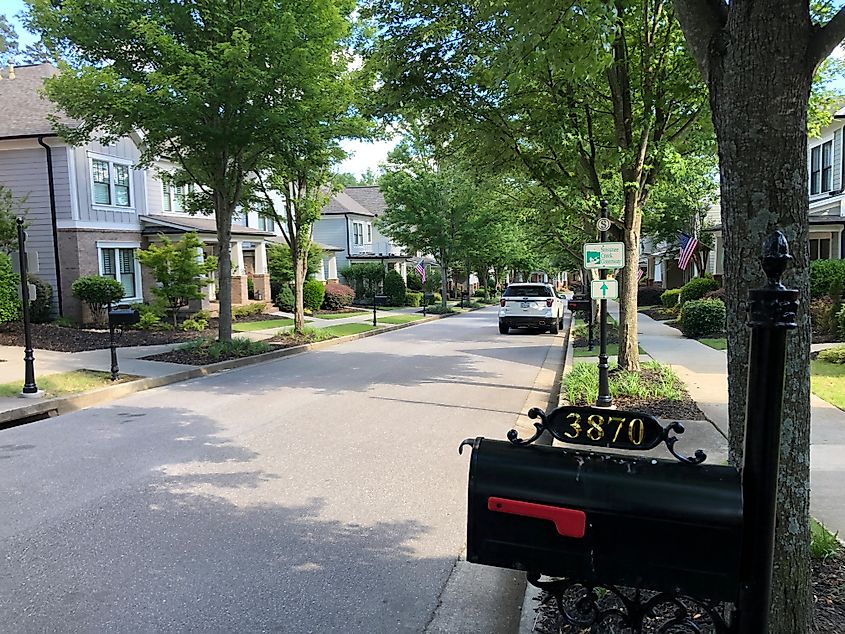
Suwanee’s identity is anchored by public art and civic planning that intentionally blurs the line between utility and exhibition. The city invests a fixed percentage of capital project budgets into permanent or rotating installations. These are not tucked into galleries, they’re built into parks, sidewalks, retaining walls. Over the past five years, Suwanee’s violent crime rates, especially in aggravated assault and homicide, have remained well below both Georgia and U.S. benchmarks, with no significant spikes. The town is tightly managed by its own police department, with visible patrol routes centered around the walkable downtown grid and greenway.
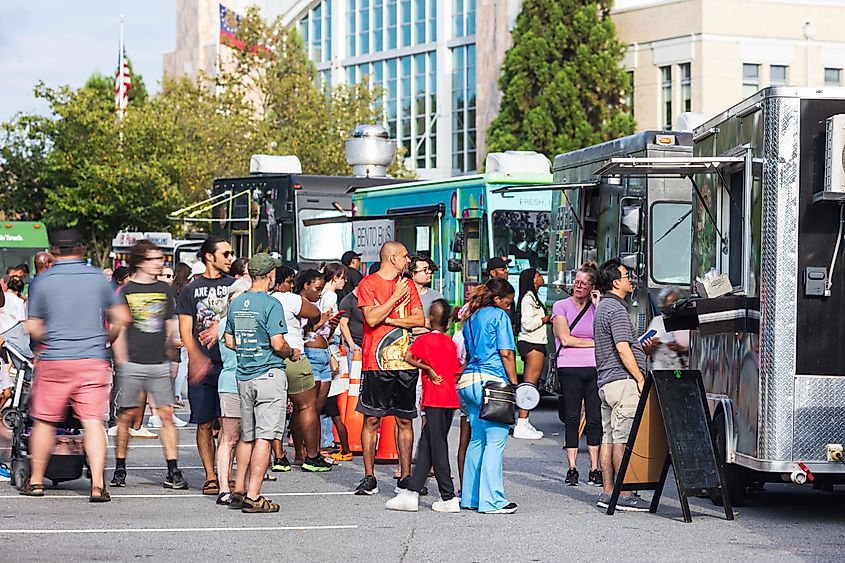
Suwanee Town Center is the city’s core, fronted by the amphitheater and surrounded by a tight ring of small businesses. Big Peach Running Co. anchors the corner beside Tequila Mama, a Latin-Asian kitchen known locally for its blackened shrimp tacos. StillFire Brewing sits across the street, drawing in cyclists from the Suwanee Creek Greenway, which begins behind the library and follows the marshes north. George Pierce Park marks the edge of the residential zone with 300 acres of forested trails, indoor rec facilities, and dedicated patrol coverage.
Peachtree City
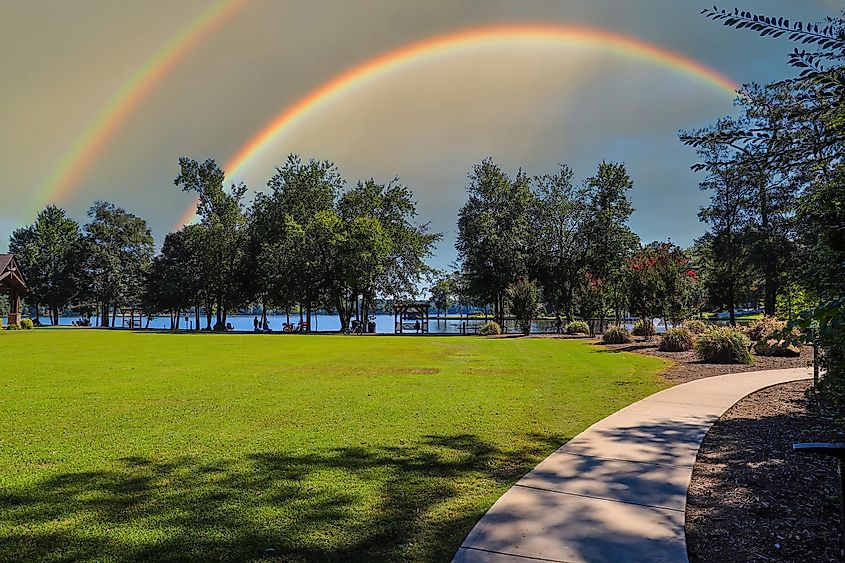
Peachtree City operates on a 100-mile network of paved golf cart paths that connect neighborhoods, schools, stores, and parks. Most households own at least one cart, and the city maintains separate parking at major businesses. The entire layout was master-planned in the 1950s and built around five artificial lakes, with zoning regulations still shaped by the original development charter. Over the past five years, violent crime rates, specifically aggravated assault and homicide, have stayed consistently below Georgia and national levels, with no significant spikes. Police monitor high-traffic path intersections and coordinate with HOA security in larger subdivisions.
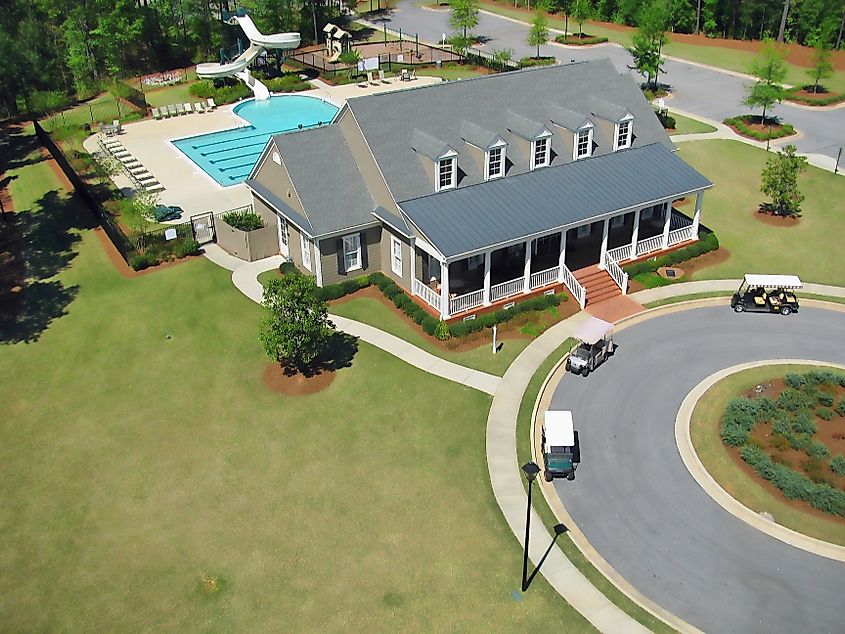
Lake McIntosh Park offers public access to the lake, with a boat ramp, fishing pier, and a cleared picnic lawn used for concerts. The Frederick Brown Jr. Amphitheater, known locally as “The Fred,” books touring acts through spring and fall, drawing regional crowds under a covered canopy. Line Creek Nature Area includes boardwalks, boulders, and unpaved trails that run along the creek bed. Partner’s Pizza, a decades-old pizzeria, anchors one end of the Braelinn Village shopping center and includes cart-friendly patio seating. Just north, the Commemorative Air Force CAF Airbase Georgia Museum restores vintage combat aircraft and offers scheduled hangar tours on weekends.
Woodstock
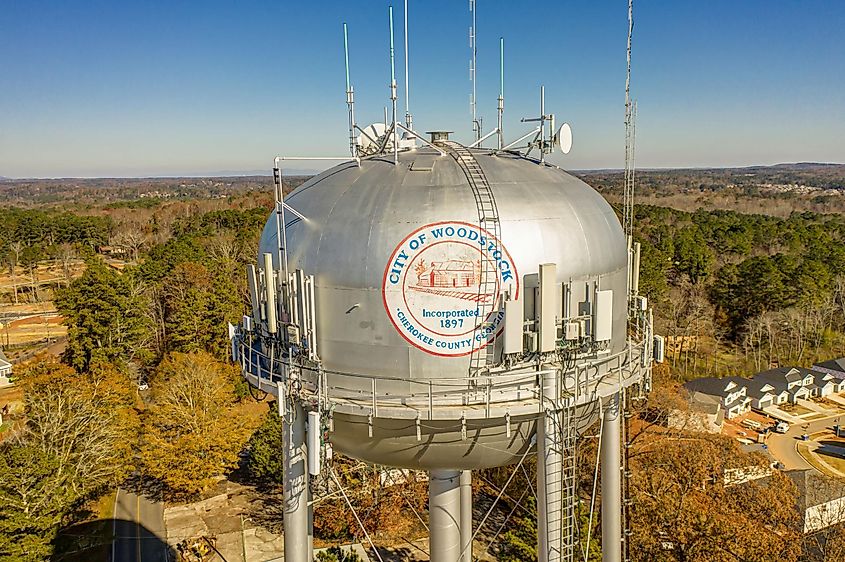
Woodstock was once a whistle stop on the Louisville and Nashville Railroad, and the original depot still stands near the active tracks that divide Main Street. The city’s revitalization began with a tax allocation district in the early 2000s, and downtown was rebuilt around walkability, not traffic volume. Most new housing is designed within one mile of the commercial core. Over the past five years, Woodstock’s violent crime rates have remained at or below state and national levels, with no sustained spikes. Police coverage is focused around the downtown corridor, with extended patrols along the trail network.
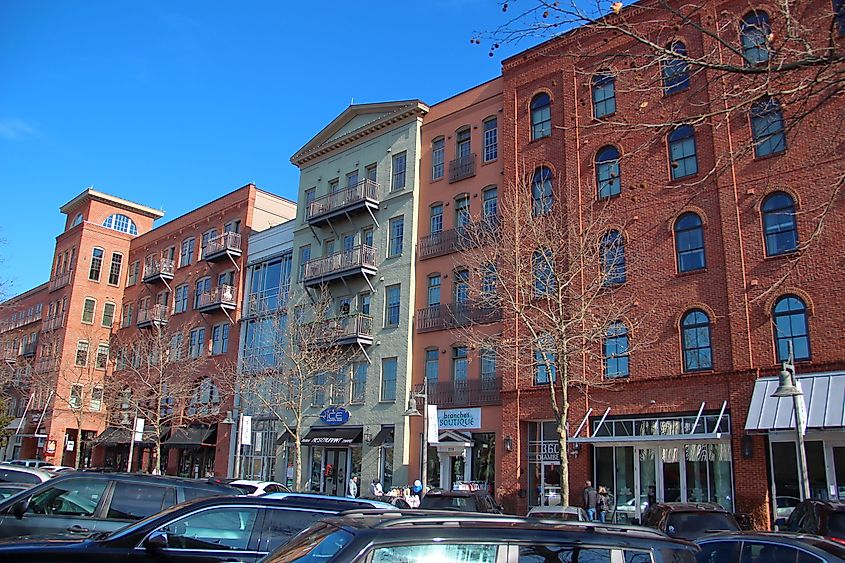
The Greenprints Trail System connects neighborhoods to parks and runs directly through Olde Rope Mill Park, a former industrial site where bike trails cut across the Little River. Reformation Brewery operates just off Main Street and includes a courtyard that shares space with MadLife Stage & Studios, a restaurant and live music venue with an internal recording booth. The city’s monthly Friday Night Live event draws vendors, police, and street musicians into one controlled downtown zone.
Kennesaw
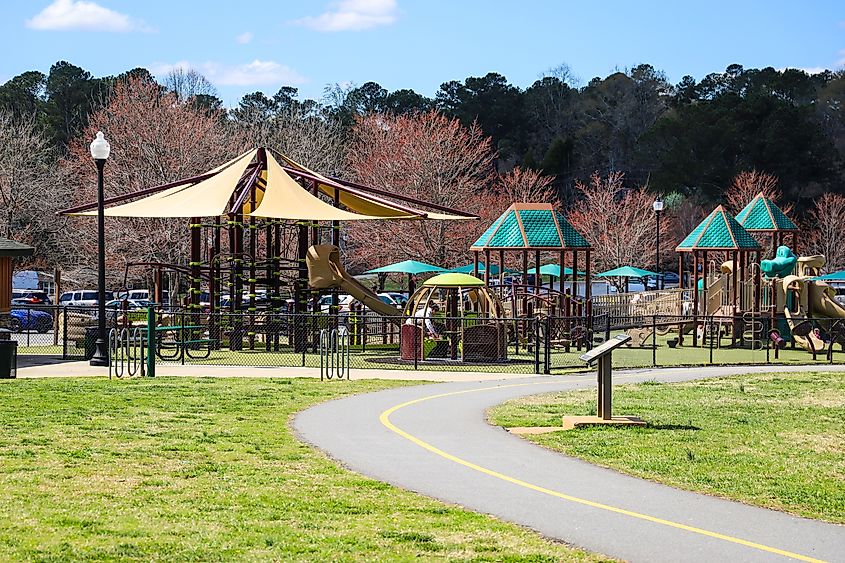
Kennesaw passed an ordinance in 1982 requiring every household to own a firearm, a symbolic law still on the books. While largely unenforced, it reflects the city’s longstanding emphasis on community policing and deterrence. The police department operates its own citizens' academy and maintains high patrol visibility around the university, parks, and downtown zone. Rates of aggravated assault and homicide, over the past 5 years, have remained under state and national averages, with occasional fluctuations that never persist. The city’s crime trend lines stay well below Georgia’s broader curve.
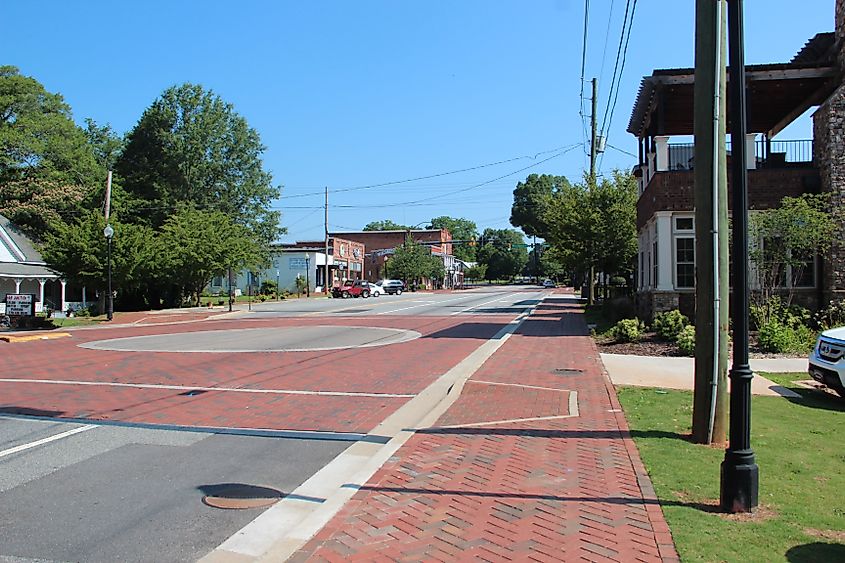
Kennesaw Mountain National Battlefield Park spans 2,900 acres, with over 20 miles of trails and a federal visitor center that tracks troop movements from the 1864 Atlanta campaign. Big Pie In The Sky, known for its 30-inch pizza challenge, anchors a plaza near downtown and pulls foot traffic from nearby student housing. The Southern Museum of Civil War and Locomotive History, located in the old rail depot, houses the General locomotive and operates under the Smithsonian system. Swift-Cantrell Park includes a dedicated skatepark, splash pad, and off-leash dog run, with assigned patrol zones during peak hours. Main Street hosts seasonal events with fixed barricades and on-site police presence from multiple jurisdictions.
Braselton
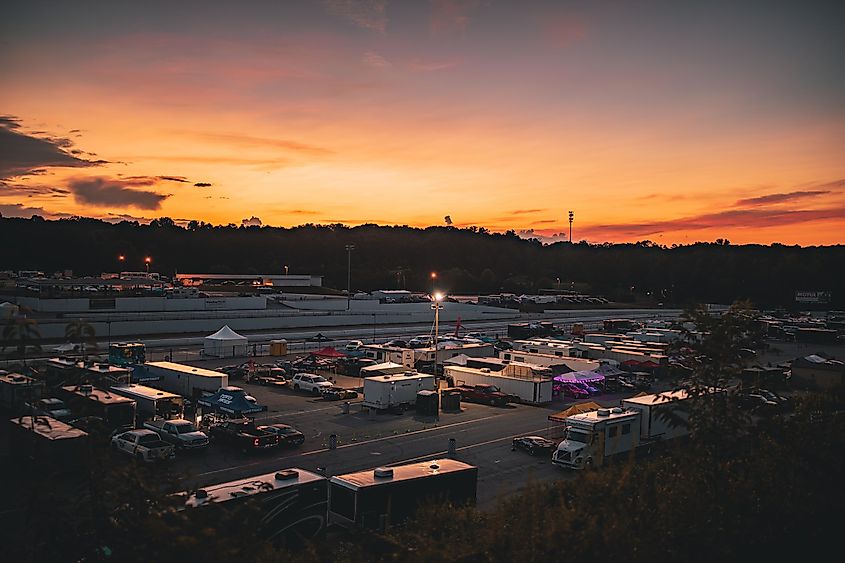
Braselton was once owned almost entirely by one woman, Braselton Brothers Department Store heiress Susan Hosch, and parts of the town were famously purchased by actress Kim Basinger in the late 1980s, a move intended to turn it into a film and tourism hub. That effort failed, but the town kept its self-contained structure. Spread across four counties, Braselton maintains its own police department and municipal court, unusual for its size. Violent crime, especially aggravated assault and homicide, has remained consistently low, with only minor deviations and no sustained elevation above state or national rates. Patrol routes follow a tight loop along Highway 211 and within the historic core.
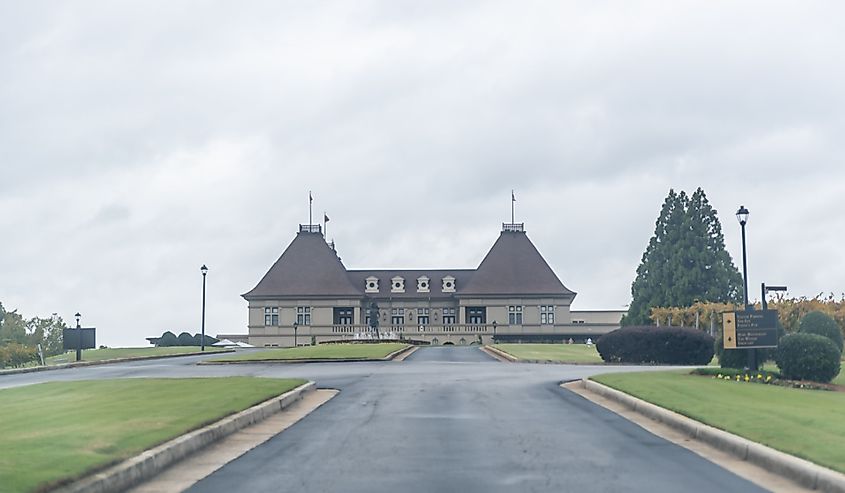
Château Élan Winery and Resort is the dominant landmark, with public walking trails, golf courses, and weekend tastings open to non-guests. Braselton Brewing Company occupies the former town gymnasium and includes both indoor dining and covered outdoor space facing Davis Street. The Braselton Brothers Store building, now converted into retail and city offices, anchors the historic downtown and sits across from the town green, where weekly food truck nights are staffed by local police and monitored by surveillance. Mulberry Riverwalk runs along the back edge of town and offers uninterrupted access to the waterline.
Dahlonega
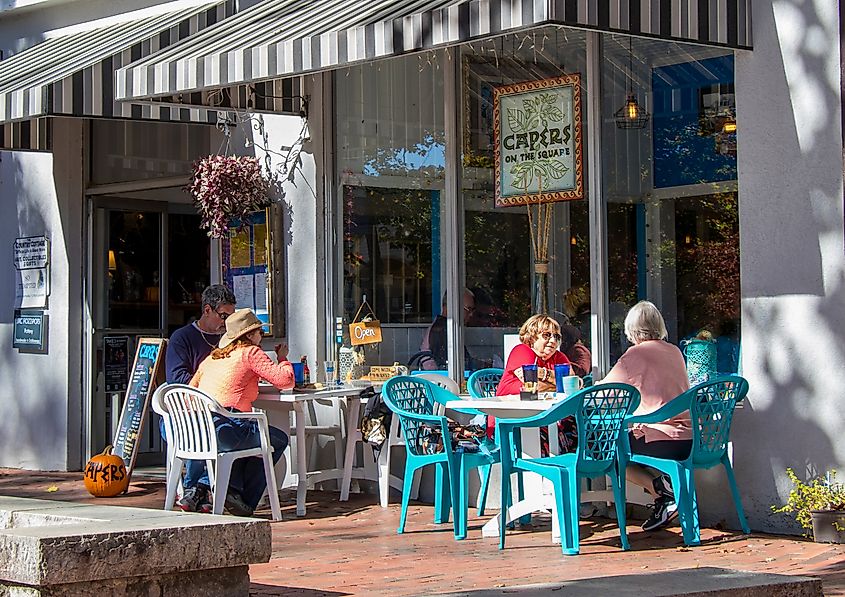
Dahlonega was the site of the first major U.S. gold rush in 1828, predating California by two decades. The old Lumpkin County Courthouse, now the Dahlonega Gold Museum, stands at the center of the square and still houses original wooden jail cells and mining artifacts. The town is also home to the University of North Georgia’s main campus, whose cadet program operates under the state’s military college system. Police coverage is split between city and university departments, with joint jurisdiction downtown. Over the past five years, violent crime rates, especially aggravated assault and homicide, have stayed below both state and national benchmarks. Most fluctuations remain within low, isolated ranges.
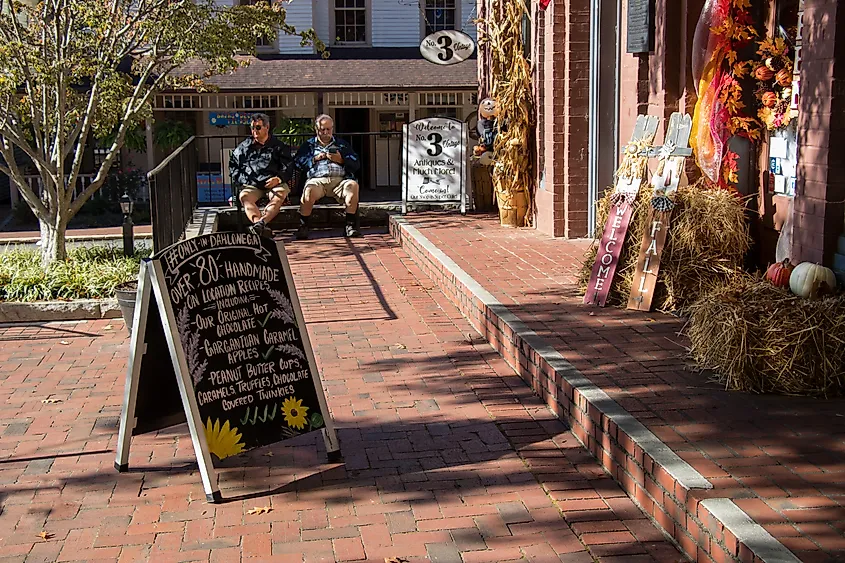
Consolidated Gold Mine offers underground tours of an abandoned shaft, with timed group entries and monitored conditions. Spirits Tavern, located in a former hardware store, runs daily trivia and keeps security visible during late hours. Paul Thomas Chocolates, across from Hancock Park, manufactures and sells on-site with walk-in viewing of the molding process. Bear on the Square, the annual Appalachian music and craft festival, is held directly around the square and co-managed by city staff and local police. Patrols increase during leaf season and are supplemented by mounted volunteers in the outlying park areas.
Richmond Hill
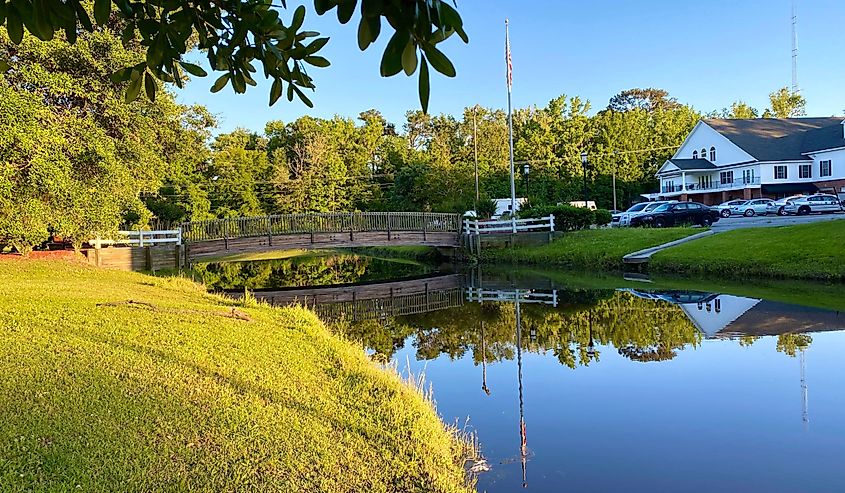
Richmond Hill began as a planned community for the workers of Henry Ford’s sawmill and experimental agricultural complex. Ford built schools, homes, and a commissary, and later lived seasonally on a nearby estate overlooking the Ogeechee River. His presence shaped the town’s layout, still visible in the grid patterns and street names. Today, Richmond Hill operates its own police department with full city jurisdiction, separate from Bryan County Sheriff’s Office. Violent crime has remained consistently below Georgia and U.S. averages, with no extended spikes. Patrols prioritize residential zones, school corridors, and city parks.
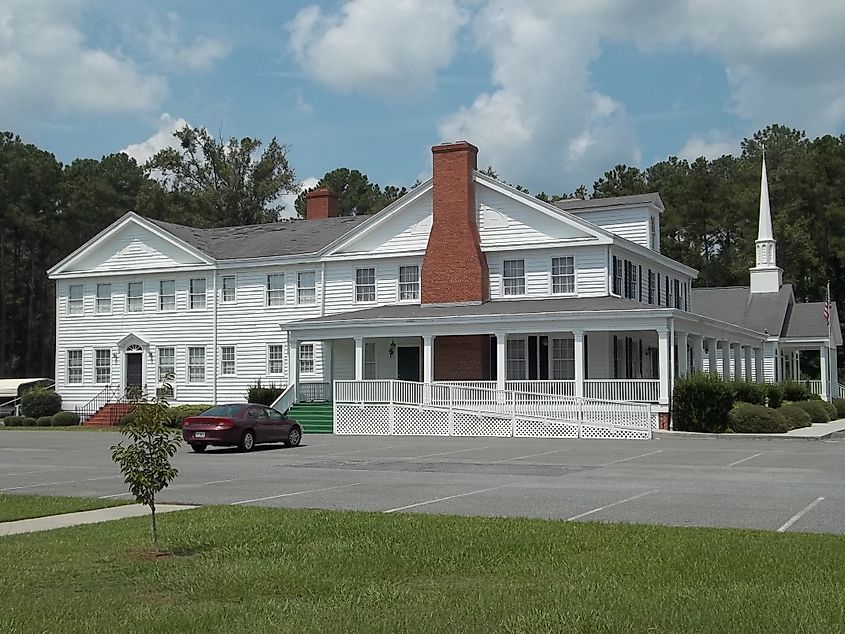
Fort McAllister State Park holds the best-preserved Confederate earthworks in the Southeast and includes a ranger station, boat ramp, and dockside museum with weekend patrol coverage. Fish Tales, at Fort McAllister Marina on the Ogeechee River, shares parking with a small bait shop and maintains steady foot traffic year-round. J.F. Gregory Park contains 335 acres of trails and wetland boardwalks.
St. Marys
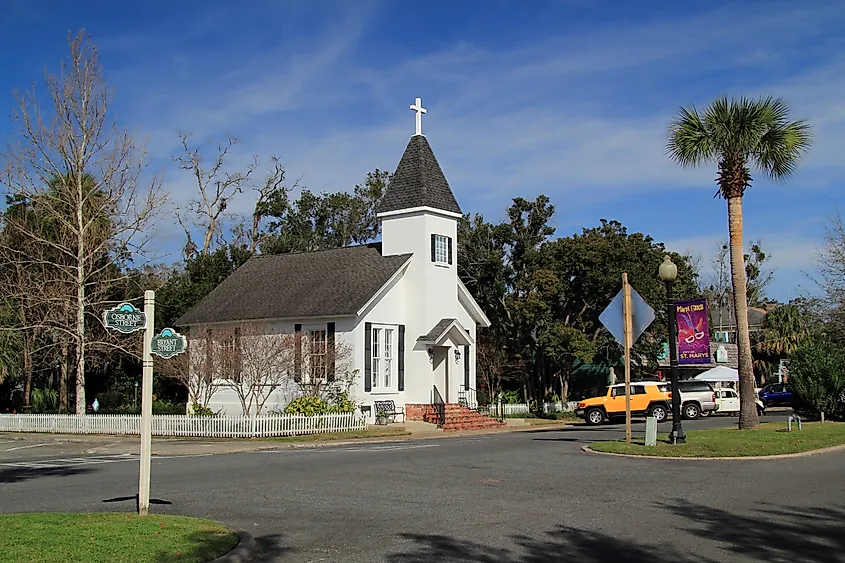
St. Marys is the southeasternmost city in Georgia and home to the primary ferry terminal for Cumberland Island National Seashore. It borders the Kings Bay Naval Submarine Base, which occupies over 16,000 acres and directly shapes the city’s infrastructure, population, and law enforcement structure. Naval security overlaps with local jurisdiction, and coordination between base police and city officers is routine. St. Marys has maintained low violent crime rates well below Georgia and national averages, with only minimal fluctuations. Most incidents are property-related and occur in isolated zones near highway corridors.
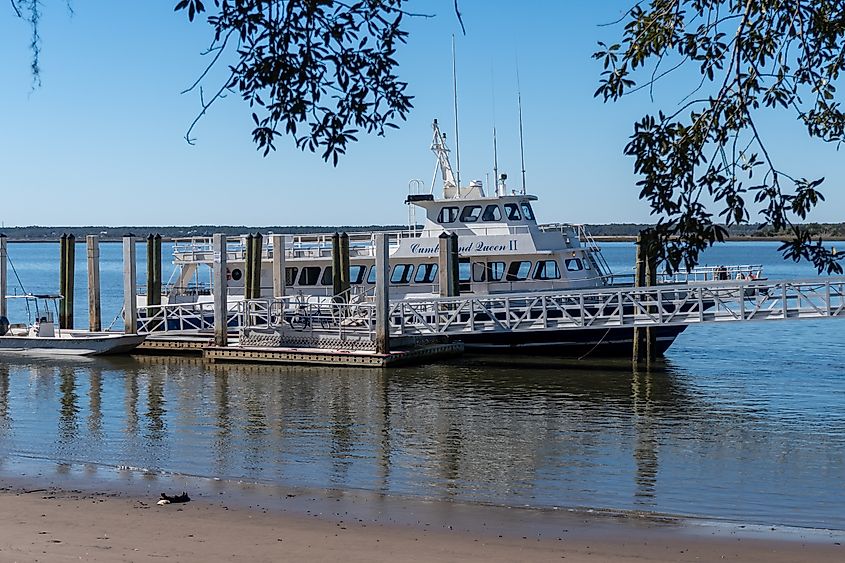
The Cumberland Island ferry departs from the St. Marys Waterfront Park, which includes a bait shop, walking pier, and the orange-roofed St. Marys Submarine Museum, staffed by volunteers, many of them retired Navy. Seagle’s Restaurant sits inside the Riverview Hotel, a three-story brick structure built in 1916, facing the marsh. Crooked River State Park, five miles north, offers boat launches, RV sites, and tidal marsh access with steady ranger patrol. The city enforces quiet hours and live music ordinances along Osborne Street.
Safety in Georgia’s small towns isn’t accidental; it’s engineered through design, jurisdiction, and routines that keep eyes on streets, paths, parks, and waterfronts. From golf carts and greenways to town centers, equestrian zoning, and naval oversight, these nine communities manage risk without surrendering character. The takeaway is simple: when civic design aligns with accountable policing and engaged neighbors, stability follows—and the rhythms of school runs, games, and errands stay calm.
